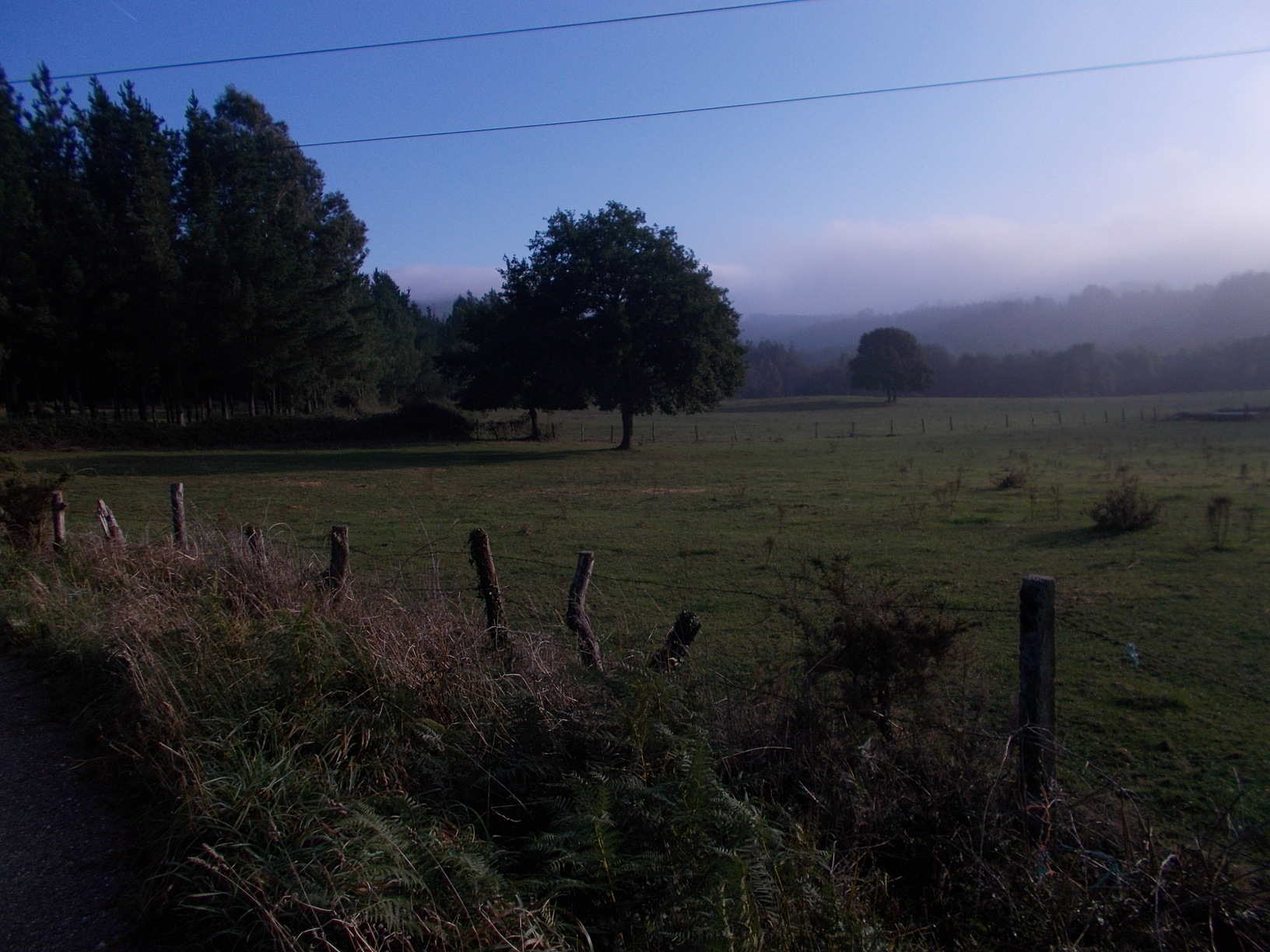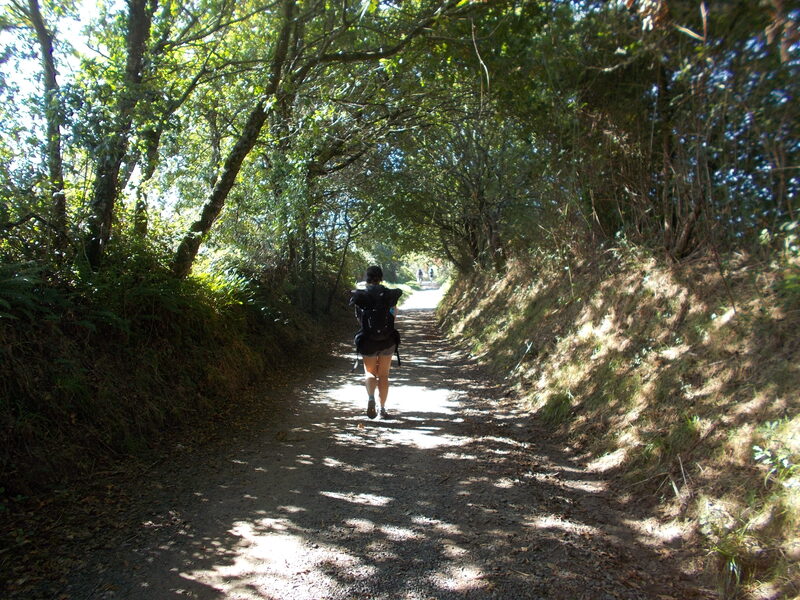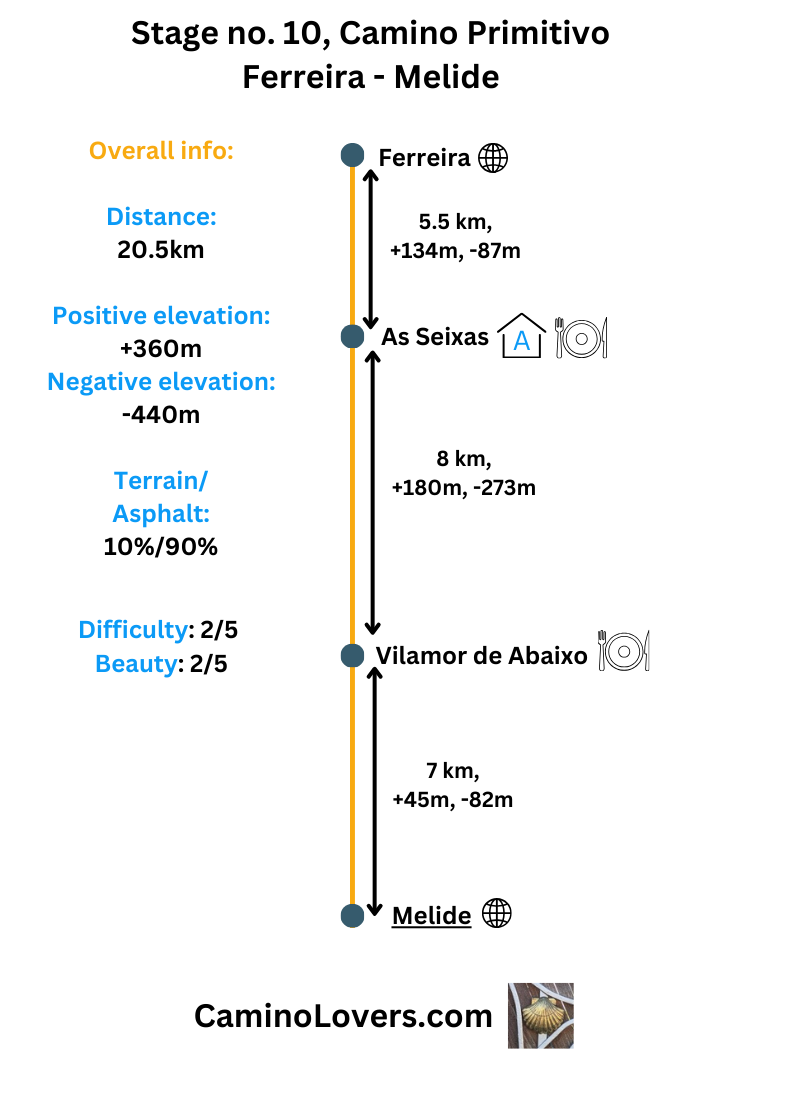
Table of Contents
Basic Details
- Starting point: A small Galician hamlet of Ferreira, with only 60 inhabitants, but three pilgrim albergues, basically living from the Camino, for a good position it has on the way (roughly in the middle between Lugo and Melide, two bigger cities and important places on the Camino).
- Ending point: Melide, a Galician city of roughly 9,000 inhabitants, with over 10 pilgrim albergues. If you wonder how that’s possible, it is here the Camino Primitivo joins Camino Frances, and Melide is already on the last 100 kilometers of Camino Frances. Things get incredibly busy here and you will meet crowds of pilgrims. The situation brings both bad and good things to your pilgrimage (at least in my opinion it does). A good thing is that you will find absolutely any imaginable service for a pilgrim (and some unimaginable services too) in Melide.
- Availability of alternative routes: Not really, there aren’t any alternative ways or trails that will take you from Ferreira to Melide. Your only option today is following the official Camino.
- Distance: 20.5 km (download GPS here).
- Link to online map: Official camino route: here.
- Elevation difference: + 360m, -440m.
- Difficulty score: 2/5.
- Beauty score: 2/5.
- Terrain/asphalt: 10%/90%. Sadly it is almost entirely paved road walking today. At least you stay away from any major roads in the zone, and do not have to worry about heavy traffic or something similar.
- Next stage: Camino Primitivo, Stage no. 11. Melide – O Pedrouzo.
- Previous stage: Camino Primitivo, stage no. 9, Lugo – Ferreira.
Elevation profile for the route

– As you can see on the chart above, you won’t encounter any climb or descent today with a gradient exceeding 8%, and even the 8% is only on a few short stretches. The stage can be divided into two parts, equally long. The first 10 kilometers you simply climb up, very gradually, not making more than 300 vertical meters on 10 kilometers. And the second half of the stage is mostly a gradual descent with the flat 5 kilometers at the end. A pretty easy stage in general, and a pilgrim in a good shape can easily walk it in 4-5 hours.
Advanced info about the stage
- Trail marking: Very good, and you’re already on the last 100 kilometers, which means that the paths are trodden by many pilgrims (and the number will only grow exponentially in Melide), hence you always see someone in front of you or behind you, and getting lost is close to impossible–unless everyone follows the bad way :). There are also so many stickers referring to various websites and mobile apps about Camino all along the way, on every possible place one one can put a sticker on (something I’d never do to promote this website, but yeah, not everyone cares about nature or about not polluting their surroundings), so just watching for such signs will help you make sure you’re on the way. But there honestly aren’t any tricky parts today, and you can calmly keep your phone in your backpack for the entire day…
- Natural places worth seeing: Nothing worth a special mention really, but as you will see on the gallery below, today’s stage offers some nice views, although only on a few sections of the walk. One place that some people like and some hate is the Sierra do Careon, with the many wind turbines and views in all directions. You get closest to it exactly at this point, and there is a small path to the left, following which you will reach the top of the ridge, get totally close to the wind turbines, and have the best views. It is roughly 800 meters to reach the top of the ridge, following the path I mentioned.
- Historical and architectural places worth seeing:
- Depending on where you sleep in the zone of Ferreira, you may pass a small Roman bridge, exactly here, if you haven’t done that already yesterday while entering the place, or during your afternoon stroll in the zone :). It isn’t any major bridge and would not be worth traveling for from a distance, but since it is right on the Camino, it is worth mentioning for true history and architecture lovers.
- Several small churches of typical architecture for this zone of Galicia–just like yesterday. None of them is worth a special mention, but they are right on the Camino, and hence you can simply stop by and marvel at the work of devoted believers. The nicest one is perhaps the Church of St. Marry directly in Melide, located exactly here.
- Museum “Museo da Terra de Melide”, in Melide, exactly here. An interesting museum (we can call it ethnographic thought it isn’t only that), with a wide array of objects on display, dating back to medieval times (many of these objects were discovered on the archeological sites you’ve passed closed by today and the day before), but also many contemporary objects of daily use typical for this part of Galicia, and Galicia in general. Free entrance, open daily except of Monday, in the afternoons it is open from 5pm to 8pm, which is an excellent time for some “past walking” activity for pilgrims. Worth a visit in my view, especially for people who are into history.
- Camping/bivouac options on this stage: Generally speaking, it isn’t too bad. The zone is sparsely populated, and while there are many roads and fences denoting private property, passing through the zone I got an impression that with a bit of research and making a bit of detour, one would be able to find a decent spot. For example close to the zone of Ponte de Pedra, location on Google maps here, or in the zone of the village of Furelos, exactly here, where in the summer groups of children camp. Outside of the summer months though this can be your place. When children camp there, for sure it can’t be too bad of a place for camping… There is also one organized (paid) camping place 3 km outside of Melide, exactly here, called “Gamping Melide”. It is a bit away from the Camino (1.5 km aerial distance), but you can reconnect to the way later on, simply taking some of the paths going north. I’ve never been there, but based on Google reviews some pilgrims camp here, and they are saying good things about the place…
- Dog friendly score: 2/5. Again too much of paved roads, and little shade. Also the big dogs waiting, sometimes behind fences, sometimes not. Not a great stage for the dog, but doable, since it isn’t very long. A few places in Melide accept dogs, for example Alberge Pereiro (previous reservation necessary), location on Google maps here, or Albergue Melide, location on Google maps here.
- Special remarks: Melide is a famous city for eating octopus, or “puplo” in Spanish. While I do not support eating animals in any form, I still feel it is fair to the readers to mention this here :). The places where they serve the octopus are called “pulperias“. Obviously each one in the town claims to have “the best pulpo in town”, and some no doubt pay for Google reviews too. In my opinion, and based on what I’ve heard from other pilgrims who eat octopus, there’s not really much difference in taste between these places, since they all have the same suppliers and the recipes are very similar. Hence if you want to try the octopus, you can just pick the place with best prices, or the one that isn’t totally packed and you won’t have to wait there for an hour to get your meal.
Pictures from the stage
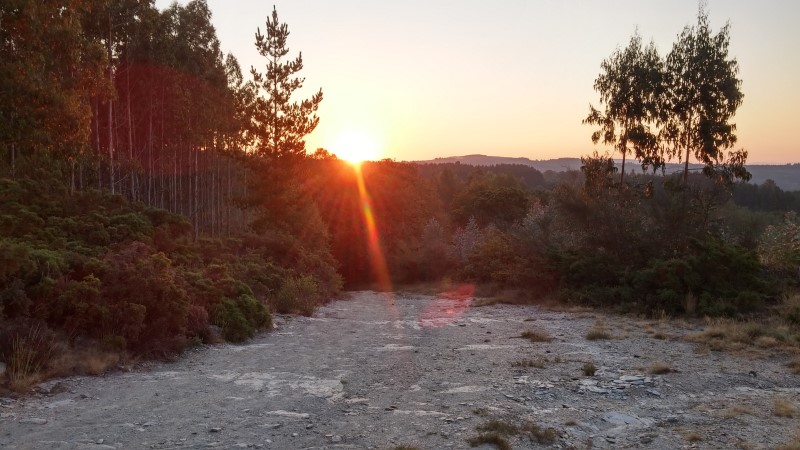 – Sunrise is never bad on the Camino, regardless of what the surrounding landscape is 🙂
– Sunrise is never bad on the Camino, regardless of what the surrounding landscape is 🙂
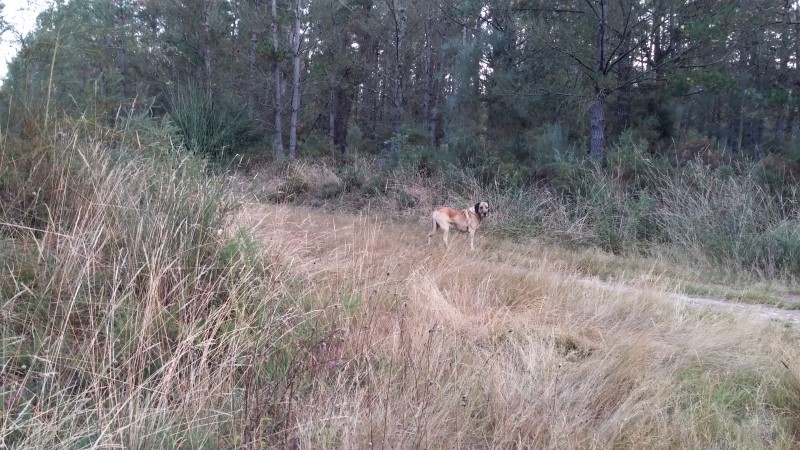 – BIG dogs are never too far away in rural Galicia. Luckily they do not mess up with pilgrims, and are generally friendly, unless you cross their territory.
– BIG dogs are never too far away in rural Galicia. Luckily they do not mess up with pilgrims, and are generally friendly, unless you cross their territory.
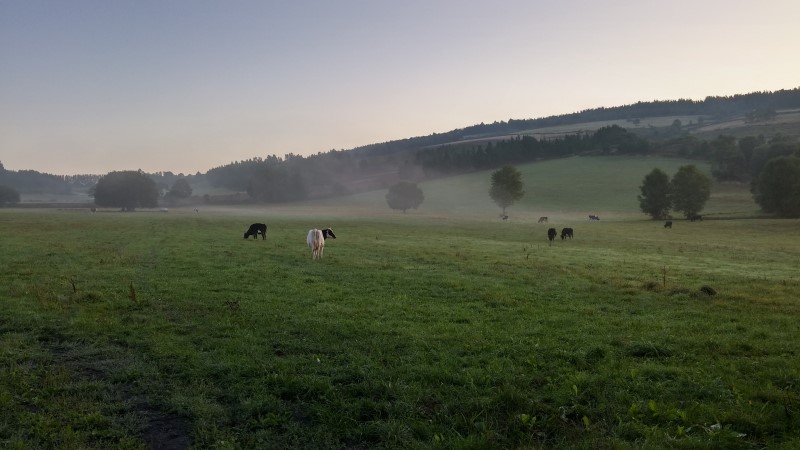 – Cows and fog, welcome to Galicia…
– Cows and fog, welcome to Galicia…
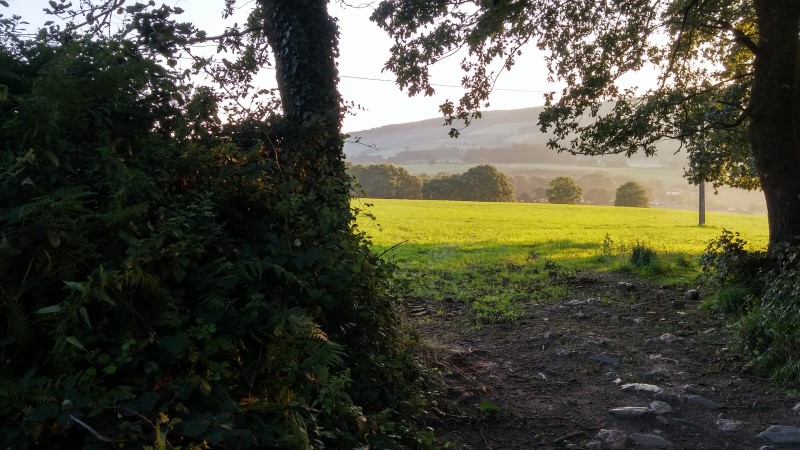 – When you have an eye for photography, you can sometimes make a nice picture even from the road, in a very ordinary landscape.
– When you have an eye for photography, you can sometimes make a nice picture even from the road, in a very ordinary landscape.
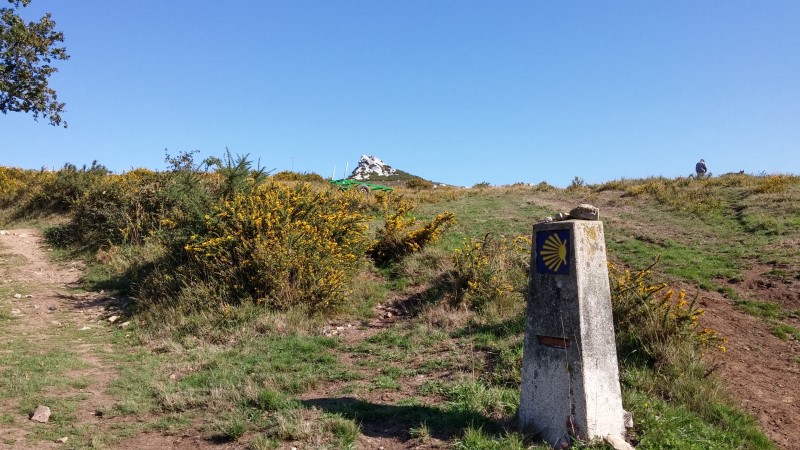 – One of the very few trail sections today. Enjoy it while it last, since it never does for too long in this part of the Camino.
– One of the very few trail sections today. Enjoy it while it last, since it never does for too long in this part of the Camino.
 – Wind turbines (for producing electricity) are very common in the zone, and you will pass close by one mountain range with too many such turbines (called Sierra do Careon) today. Locals have mixed feelings about these turbines, which is totally understandable.
– Wind turbines (for producing electricity) are very common in the zone, and you will pass close by one mountain range with too many such turbines (called Sierra do Careon) today. Locals have mixed feelings about these turbines, which is totally understandable.
Few tips at the end
- Get ready for the cultural “shock” you will experience in Melide, where the Camino connects with Camino Frances. The number of pilgrims immediately grows 10 fold, if not 20 fold :), and many things you will see in the city will help you understand better why many experienced pilgrims consider Camino Frances more a business nowadays than a real pilgrimage…
Next/Previous Stage
- Next stage: Camino Primitivo, Stage no. 11. Melide – O Pedrouzo.
- Previous stage: Camino Primitivo, stage no. 9, Lugo – Ferreira.
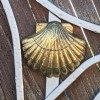



![Ultralight Packing List for Camino de Santiago [2025 Edition]](https://caminolovers.com/wp-content/uploads/2022/03/altra-shoes-640-x-480.jpg)

